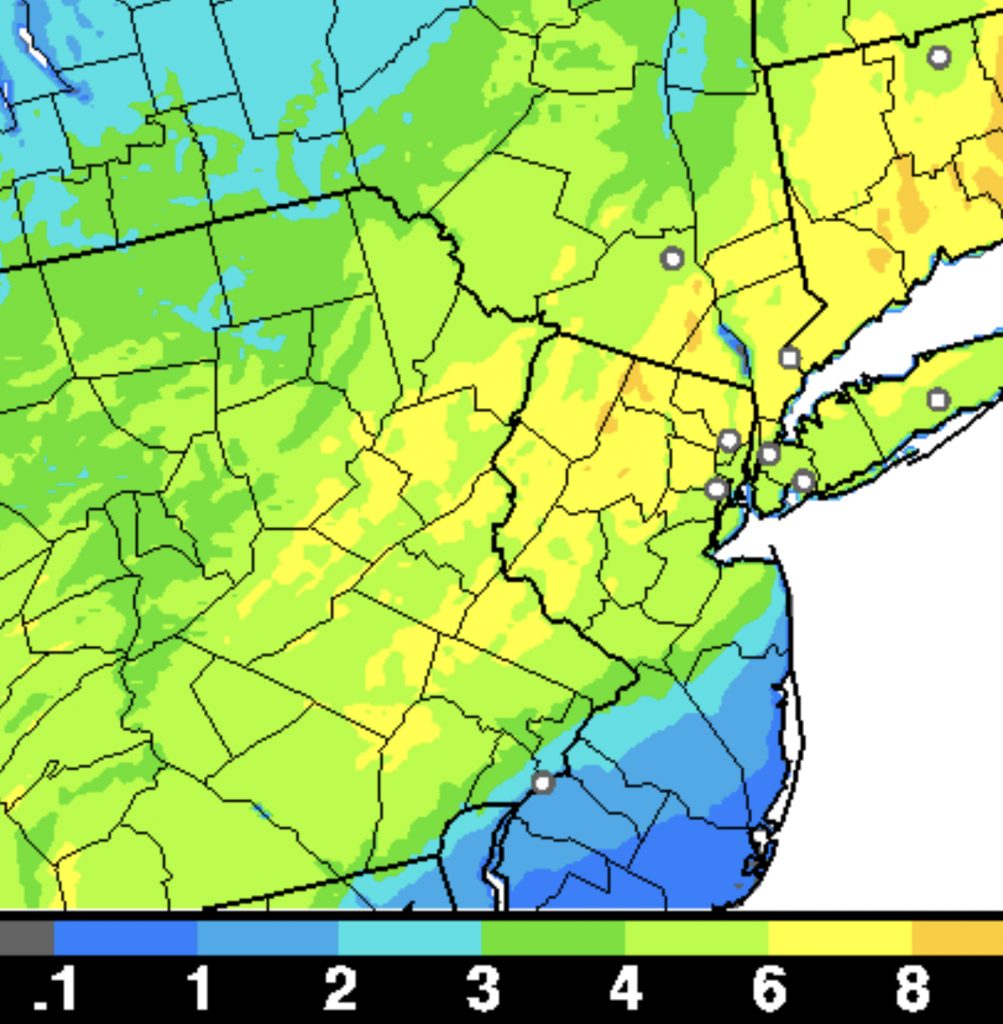Updated to include snowfall graphic
The latest NAM and GFS models have become available. Much of what I wrote earlier this morning still holds. Here are the trends-
Precipitation starts 2-4 PM, mostly as rain in our area, then mixes with sleet and snow. A mix of sleet, rain and snow falls for much of the storm. Temperatures at the surface are shown as above freezing by most of the statistical models.
QPF values have increased to over 1.10 inches water. (NAM) Temperatures at the surface remain above freezing according to the statistical models. The average temperatures in the lower atmosphere are at or below freezing.
Ordinarily, this would be a slam dunk major snowfall, BUT temperatures in the upper atmosphere become too warm to support snow during the heaviest QPF.
The short range models continue with a mix of sleet, rain and snow. The changeover to all snow late in the storm occurs after the heaviest has past.
Philadelphia, south NJ (east of the Delaware) will have minimal accumulation. Immediate suburbs north and west about 2-3 inches of heavy mixed snow and sleet, increasing to 7-10 inches in the far north and west. The further north and west, the more accumulation.

This is a tough forecast. My regular readers of this blog know that predicting accumulation from these storms can sometimes be a choice of upper atmosphere temperatures versus lower temperatures.
Despite the snow-supportive temps in the lower atmosphere, I think the “high 500mb thickness” representative of a warm upper atmosphere will cause more rain and sleet to fall than snow in Philadelphia and immediate suburbs. I went down this wrong path in November. This storm will be a good test of the same forecast issue.
It would be easier to predict a large snowstorm for Philadelphia and the immediate suburbs but I’m not going with that at this time.
